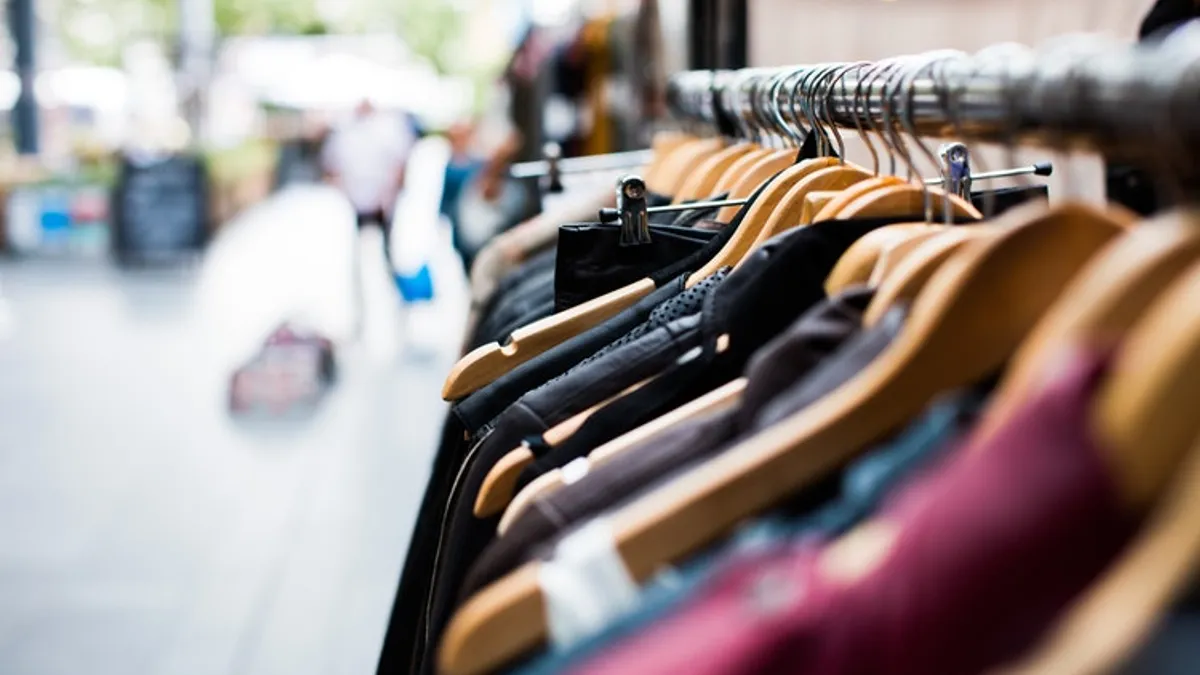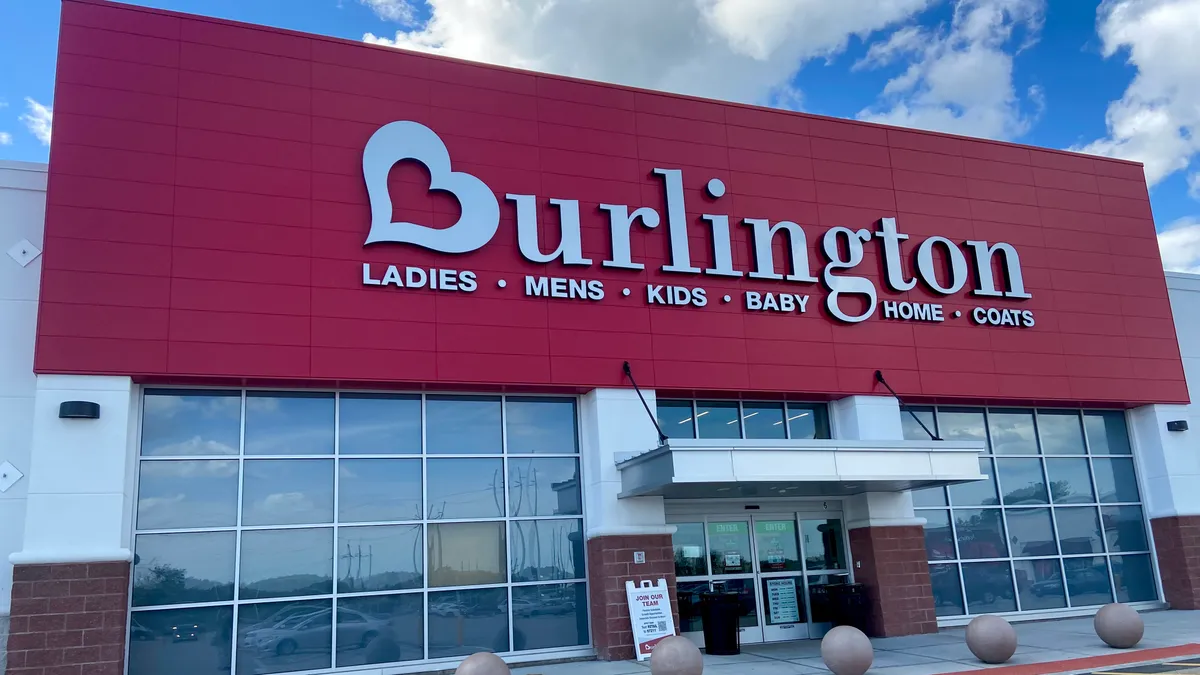Merchandising in fashion has always been tricky. Once-trendy styles can quickly fall out of favor, leaving over-ordered piles unsold or tagged with margin-killing discounts. Retailers miss out on sales if hot items sell out.
After a busy holiday season that allowed retailers to make a dent in what for many had become bloated inventory, especially in apparel, the COVID-19 pandemic is reversing much of that progress by keeping consumers away from stores.
Most retailers selling apparel, including specialty stores, department stores, sporting goods stores and mass merchants had pared down their inventories, even elevated ones, in the fourth quarter, according to an April 2 inventory tracker from Coresight Research.
"We try to turn the inventory into cash," Emanuel Chirico, CEO of PVH, which owns brands including Calvin Klein and Tommy Hilfiger, said to analysts earlier this month. "The old story is in apparel, if you're having a sales problem, this is not like wine that gets better with age. Your inventory gets worse."
Now, however, a disease outbreak has played havoc with both supply and demand. Or as Chirico put it: "This is a completely different situation and we have to have a completely different mindset."
The situation, as it relates to COVID-19, emerged in February and spared few retail segments, according to Coresight's research.
"US retailers have witnessed supply chain disruptions, including order shifts and delays," Coresight CEO Deborah Weinswig wrote in the report. "Although the arrival of the coronavirus in the US has triggered consumers to stockpile food and cleaning products, thus boosting sales for a few food and drug retailers, we expect overall retail sales to be negatively impacted in the next quarter as the outbreak worsens — lowering or slowing inventory turnover for many retailers."
The trends are seen across the industry. The question for all of them, especially in apparel, is how to respond. Already, discounts on apparel are up 18% in the U.S., "an indication that retailers are marking down products and promoting sales as a method to entice consumers into online purchases," according to research from analytics firm Edited, which also noted that "Discounting activity grew across March in line with the increase of confirmed cases in the US."
To avoid that, some retailers are taking the unusual step to "pack and hold" or "pack and save" at least some spring and summer inventory to next season. Gap Inc. CFO Katrina O'Connell told analysts on an April 9 conference call sponsored by Baird that the cost of storing some summer inventory is preferable to "the potential margin drain of needing to clear through those," and said that it "frees up working capital for the first half of 2021 as well."
Levi's is taking advantage of the fact that its main attraction, denim jeans, is a classic, and similarly holding on to much of its assortment rather than churning it through discounts, CEO Chip Bergh told analysts last week.
"[A] significant majority of our inventory is core replenishment, which can be carried over to future seasons," he said, according to a Seeking Alpha transcript.
PVH's Chirico said that the company is mulling that option because it's wary of having to offload those goods to off-price retail partners on the cheap. Indeed, the pandemic is already leading to a buyers market for off-price retailers. There is "far too much inventory already inbound for Fall," Credit Suisse analyst Michael Binetti on March 26 wrote in emailed comments. "We expect excessive discounting, and the best offprice buying environment in a decade."
The turmoil in inventory is also extending to future orders, including holiday planning. The number of new styles entering the market plummeted as much as 66% year-over-year as of April 14, according to Edited. William Blair analysts in emailed comments Thursday said they expect "significant pullback in inventory orders that will start being impactful in the summer/fall period."
"It gets hard to wean the customer off the discounting drug, it's a downward spiral."

Simeon Siegel
Managing Director, BMO Capital Markets
In her remarks on the Baird call, Gap Inc.'s O'Connell essentially confirmed that dilemma, saying the company has asked vendors to hold shipment or stop production on summer and fall items, and that "controlling our inventory in the face of this uncertain demand is one of the most important levers we have to manage working capital and preserve cash." In mid-March, as Gap Inc. was poised to make its fall orders, the COVID-19 outbreak began to necessitate the closure of stores. That's when the retailer "significantly cut fall purchases to meet the lower expected demand," she said. "And we've not placed our holiday buys yet. So, we will be able to purchase much lower inventory levels for Q4."
This is a scenario that holds little recourse for brands, according to Simeon Siegel, managing director at BMO Capital Markets. "Do they ship to an off-pricer immediately, try to get it through their own channels as soon as they can, or save it?" he said in an interview. "All three are less than optimal options — it's about what's the least bad."
One of the greatest risks of sweeping away inventory through clearance is that it could reignite the same penchant for discounts of the Great Recession, which consumers fiercely held even into the economic recovery, he said. "It gets hard to wean the customer off the discounting drug, it's a downward spiral."
Perhaps the only upside of the store closures necessitated by the pandemic, which have imperiled retail workers' livelihoods and undermined most players in the industry, is that they're allowing for some planning, so that inventories won't overflow too much, according to Siegel. "It's perhaps the one silver lining of having stores closed, which has been horrible for everyone involved," he said. "If the stores were open, companies would still be trying to fill those stores with inventory. During the Great Recession, retailers were operating and still fulfilling orders and bringing product to fill shelves."
Still, merchants should be clear-eyed about what it means to be able to hold inventory for as long as a year, Siegel warned. In other words, the complexity of planning fashion buys will hardly go away; in fact it's just more complicated. "If any brand succeeds in packing away their product for the following year, they likely need to revisit or rethink how frequently they're trying to create anyway," he said.
Despite all these efforts, an inventory buildup, and the attendant discounting, is probably inevitable and possibly long-lasting, according to William Blair analysts Dylan Carden and Phillip Blee. They noted it could even affect holiday planning for many retailers, especially when it comes to seasonal assortments like winter gear.
"Regardless of current initiatives to rein in inventory, we see a glut of inventory hitting the back half as stores reopen," they wrote.
























